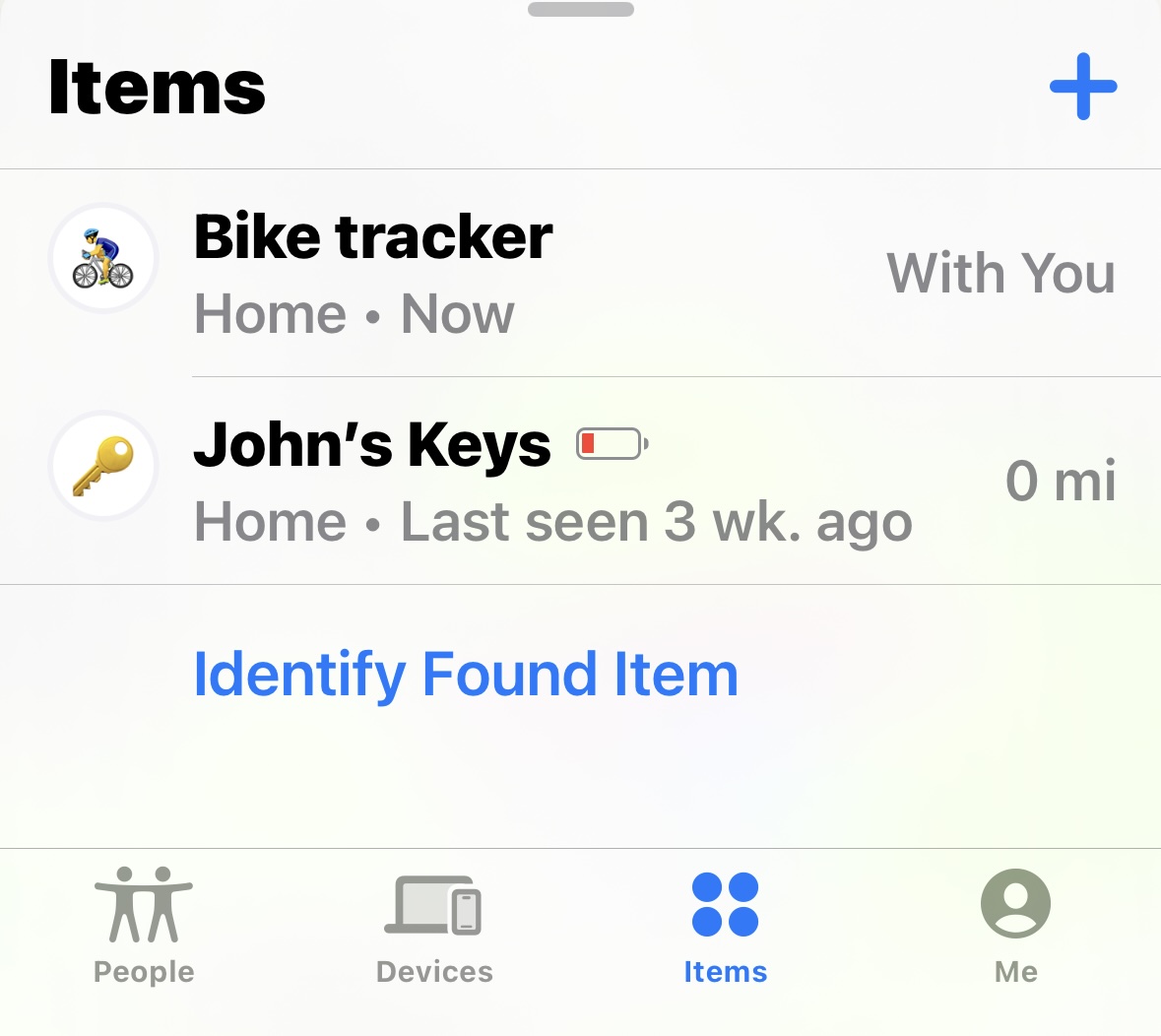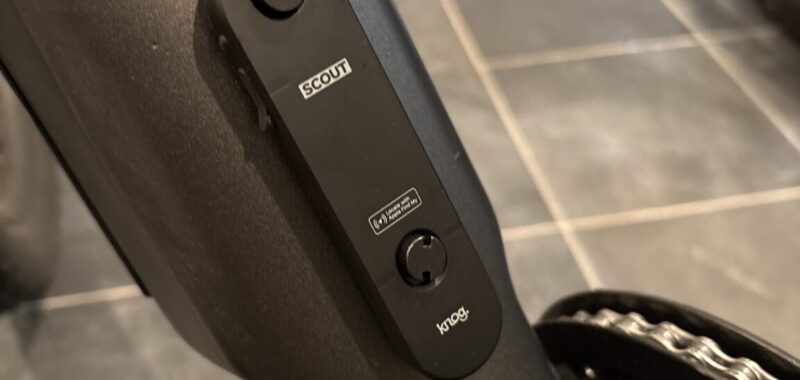When the Scout is nestled in the recess of a water bottle cage, it’s impossible to stick a USB-C charging cable into it, so you’d have to remove it to recharge it, which will add to the hassle. Otherwise, charging is as simple as getting the bike within a cable’s length of a socket or laptop.
Alerts and alarms
Knog provides software that helps you pair your iPhone with the device. Once that’s done, it can be added to the Find My system, where it will appear just like an AirTag. The process worked smoothly in my tests, and in an iOS-heavy suburban environment, there was never any problem knowing where the bike was.

Unlike my AirTag, the bike tracker’s battery is easy to recharge.
Credit:
JOHN TIMMER
But what sets this device apart from an AirTag is its motion-sensing capabilities. If you’re within Bluetooth range, the Knog application will let you turn on the alarm system and switch between audible and silent modes. In sound-on mode, moving the bike produced a series of very audible tones. In both audible and silent mode, my watch and phone immediately vibrated, with the phone continuing to make audible beeps until the alarm was disabled. You have to be within Bluetooth range to get these alerts, though, which is probably a severe limitation for people like bike commuters, who may work some distance from where their bike is parked.
Given its piercing tones, it’s a good thing that the alarm eventually shuts off on its own. When I triggered the alarm while my phone was out of Bluetooth range, however, bringing the phone back into range gave me no indication that the alarm had ever been triggered. That’s not ideal, as there are many contexts where it would be good to know if someone had moved your bike or if the alarm had made a nuisance of itself.

